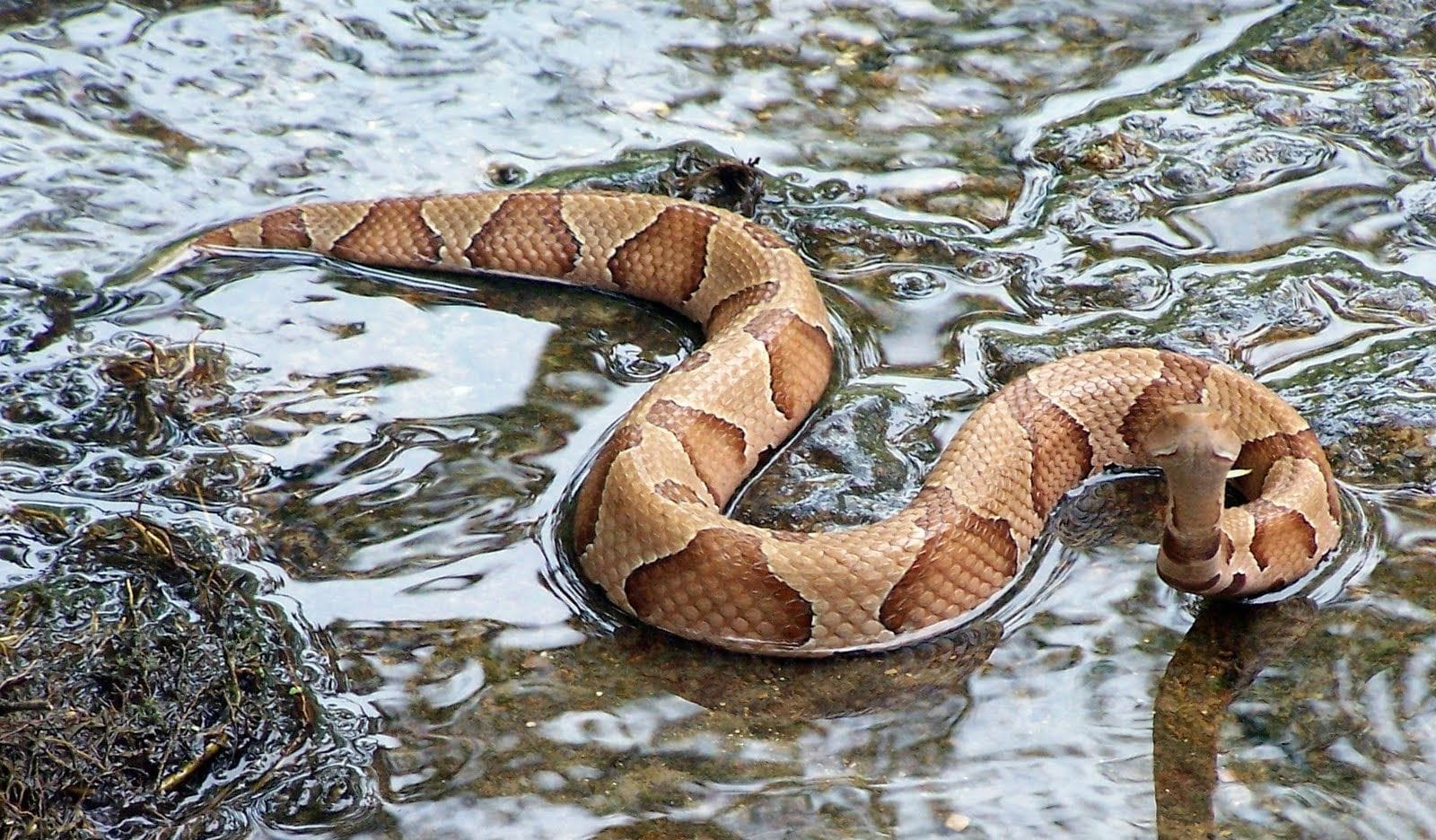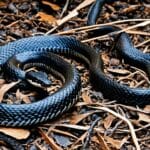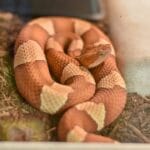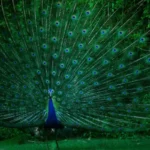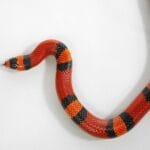Unmasking the Baby Copperhead: A Guide to Safe Identification
Spotting a young copperhead snake in the wild can be a heart-stopping moment. These snakes, while beautiful, demand caution due to their venomous nature. Knowing how to identify them is crucial for staying safe, especially since they can easily be confused with harmless snakes.
What Makes a Copperhead Unique? Deciphering the Clues
Young copperheads possess distinctive features that set them apart:
- The Telltale Head: Just like their parents, young copperheads have a triangular head. It’s noticeably wider than their neck, giving them a slightly fierce look.
- Hourglass Patterns: Their scales, ranging from copper-brown to a subtle grayish color, are adorned with hourglass-shaped crossbands. This pattern is a strong indicator that you might be looking at a copperhead.
- A Tail Tale: One of the most reliable ways to identify a juvenile copperhead is by examining its tail tip. It will be a vibrant yellow or green—a stark contrast to the rest of its body. This bright tail fades as they mature.
Copperheads vs. Their Harmless Look-Alikes: Avoiding Misidentification
This is where things get tricky. Copperheads share some resemblance to harmless snakes, such as the corn snake and the water snake. Here’s how to avoid mixing them up:
- Copperheads vs. Corn Snakes: Corn snakes have a reddish-orange belly, a feature absent in copperheads.
- Copperheads vs. Water Snakes: Water snakes have smooth scales, while a copperhead’s scales have a slightly rougher texture.
- Copperheads vs. Milk Snakes: Milk snakes also have crossbands, but they look more like blotches or bands, not the well-defined hourglass shape found on a copperhead.
A Peek into Their World: Habitat and Behavior
Young copperheads, like many reptiles, are most active at night (nocturnal). You’re most likely to find them in areas with good cover, like:
- Wooded areas: Forests provide plenty of hiding spots.
- Rocky terrains: Rocks offer warmth and protection.
- Areas near water: Like many snakes, they are often drawn to water sources.
While young copperheads are not particularly aggressive and would rather avoid confrontation, they will strike if they feel threatened or cornered.
Staying Safe: What to Do if You See One
If you encounter a young copperhead, admire it from afar:
- Keep Your Distance: Maintain a safe distance of at least 10 feet.
- No Provocations: Avoid making any sudden movements or trying to touch the snake.
- Seek Help if Bitten: While their venom is less potent than that of adult copperheads, a bite from a young one can still be dangerous. Seek medical attention immediately.
By familiarizing yourself with the unique characteristics of young copperheads and practicing safe wildlife viewing habits, you can ensure both your safety and the well-being of these fascinating creatures.
How to Outperform the Competition: Identifying Baby Copperhead Snakes
Don’t Rely on Color Alone
Baby copperheads can be grayer than adults, making their hourglass pattern crucial for identification, especially since their vibrant tail tip fades after their first year.
A Yellow Tail Doesn’t Guarantee Danger
While a bright tail is a strong indicator, some harmless snakes mimic this feature. Always look for the distinct hourglass pattern along the back.
Baby Copperheads are Venomous from Birth
Though they inject less venom than adults, their bite can still be dangerous, especially to small children and pets. Seek immediate medical attention if bitten.
Prevention is Key
Minimize encounters by keeping your yard clear of debris, trimming overgrown vegetation, and being cautious in areas where copperheads are common.
Want to know what animals eat cobras? They are deadly and venomous snakes, but some animals are immune to their venom and can even prey on them.
Learn the woodchuck vs gopher differences to know how to differentiate these animals. They look alike but have distinctions to identify one from the other.
- Mastering Leader in Spanish: The Complete Guide - April 19, 2025
- Uncovering Surprising Parallels: England Size Compared to US States - April 19, 2025
- Old Mexico Map: Border Shifts 1821-1857 - April 19, 2025
